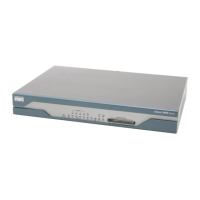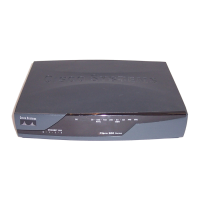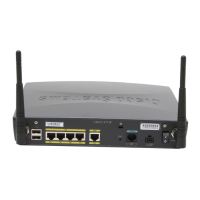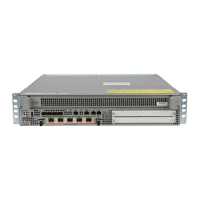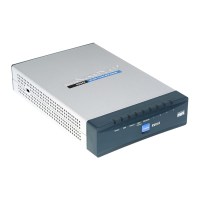Connecting Asynchronous Network Modules to Asynchronous Devices
Cisco Network Modules Hardware Installation Guide
6-4
Balanced drivers allow EIA/TIA-449 signals to travel greater distances than EIA/TIA-232
signals. The recommended distance limits for EIA/TIA-449 shown in Table 6-2 are also
valid for V.35, X.21, and EIA-530. Typically, EIA/TIA-449 and EIA-530 support 2-Mbps
rates, and V.35 can support 4-Mbps rates.
Asynchronous/Synchronous Serial Module Baud Rates
The following baud-rate limitations apply to the slow-speed serial interfaces found in the
Asynchronous/Synchronous serial modules:
• The maximum baud rate on the slow-speed asynchronous interface is 115.2 kbps. The
traffic throughput rate allowed will be full 115.2 kbps with 10 percent of traffic in the
opposite direction.
• The maximum baud rate for the slow-speed synchronous interface is 128 kbps full
duplex.
Connecting Asynchronous Network Modules to
Asynchronous Devices
An asynchronous network module provides two or four 68-pin receptacles. Each receptacle
connects to asynchronous devices by means of an octal cable that provides a 68-pin plug at
the module end and eight connectors at the network end, one for each of the eight
EIA/TIA-232 serial ports. Depending on the type of cable, the network end consists of
either RJ-45 plugs or male DB-25 connectors. RJ-45-to-DB-25 adapters are also available.
38400 12 3.7 256 78
56000 8.6 2.6 102 31
1544000 (T1) – – 50 15
Table 6-2 Serial Interace Speeds and Distances (continued)
EIA/TIA-232
Distance
EIA/TIA-449, X.21, V.35, EIA-530
Distance
Rate (bps) Feet Meters Feet Meters
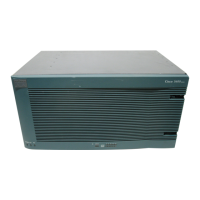
